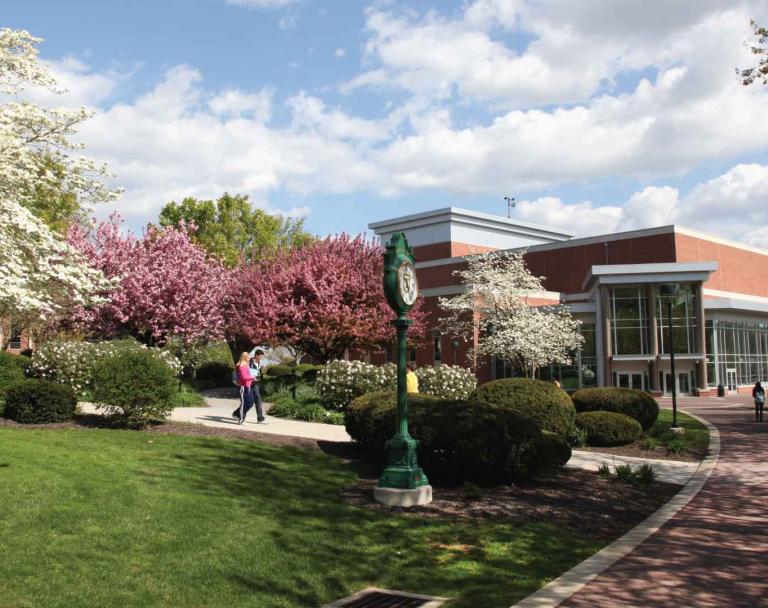Before York College, Campus Was Home to Indigenous Peoples

Before York College, Campus Was Home to Indigenous Peoples
November 22, 2021This National Native American Heritage Month, we pay tribute to the rich history of the Susquehannock in our region. Before York College, the campus was home to the once mighty Susquehannock Tribe of the Algonquin Nation.
November is National Native American Heritage Month—a time to reflect and celebrate the rich and diverse cultures, traditions, and history of America’s Indigenous population. This month, we pay tribute to the rich history of our region. Long before York College, the land was home to indigenous peoples known as the Susquehannock.
The Susquehannock was a tribe of the Algonquin nation and were Iroquois-speaking. Their name, “Susquehannock,” means “People of the Muddy River.”
Land of the Susquehanna River
Today, the river known as the Susquehanna River that divides Pennsylvania as east and central (or west) stretches about 444 miles long. It begins in upstate New York and ends in the upper part of the Chesapeake Bay in Maryland with branches off to the east and west through central Pennsylvania.
The Susquehannock Tribe has its roots with the Iroquois in upstate New York. Around 1450, they began migrating south along the river into the lower Susquehanna Valley. The river at that time was known as the “Indian Highway” as it provided an accessible route north and south.
Families were organized along matrilineal lines and settled in stockade cities in longhouses on both sides of the river and moved about every 25 years due to depleting resources. Members of the tribe would branch off and move either north or south, expanding their numbers and occupation of land.
A once mighty people
The Susquehannock were a mighty tribe when Europeans began colonizing the area. Their numbers estimated between 5,000-7,000 around 1600. According to records and archaeological information, they wore wolf and bear skins and carried bows, arrows, and clubs.
They traded fur for firearms with the Dutch and Swedes who had nearby settlements. Conflict arose between the two European settlements and their rivals—the Delaware tribe—and wars were sparked, beginning to reduce Susquehannock numbers.
Contact with people from Europe also brought about epidemic diseases such as smallpox and a rapid decline in the Susquehannock population in the early 1670s. They ultimately became overwhelmed by the colonists, rival tribes, and their part in The Beaver (fur) Wars.
Some of the Susquehannock are believed to have fled west through gaps in the Allegheny into western Pennsylvania and some even further beyond into Ohio—possibly being absorbed into the Shawnee tribe. By about 1700, as few as 300 remained in the Susquehanna Valley.
William Penn and Conestoga Indian Town
In 1681, King Charles II of England repaid a debt to William Penn’s late father by granting Penn land in an area known today as Pennsylvania. Penn, a writer and religious thinker belonging to the Religious Society of Friends (Quakers), became the first governor of the state and had peaceful relations with the indigenous people.
In 1701, Penn visited the Susquehannock at their last remaining settlement in Conestoga Indian Town in present-day Lancaster County. The English called them the Conestoga Indians and in 1697 named the town and nearby river for them. Penn also signed a peace treaty and a protection order over them but, unfortunately, the protection of the provincial Pennsylvania government was not enough. Their numbers continued to steadily decline and in 1763 a census counted only 22 Susquehannock people.
The Conestoga Massacre
In 1763, after the conclusion of the French and Indian War, Pontiac’s War was launched by a group of united tribes under Chief Pontiac (Ottawa) who were angry with British rule in the Great Lakes region. The series of attacks on British forts and settlements in an effort to drive the British out of the region became known as Pontiac’s Rebellion or Pontiac’s War.
Word of this rebellion reached Pennsylvania and false rumors emerged that the peaceful Susquehannock supported Pontiac’s War. A small group of mostly Scotch-Irish Presbyterians who lived in Paxtang (present-day Dauphin County) formed together to be known as the Paxton Boys. They were angered by the attacks on English settlements and, hearing of these rumors against the Susquehannock, set out to Conestoga Indian Town.
The Paxton Boys marched on the town on December 14, 1763, and swiftly murdered six Susquehannock while 14 others escaped. The survivors fled to Lancaster where they were locked up in a guarded jailhouse (known as “Old Jail”) for protection. Unfortunately, the local sheriff was not capable of handling the angry Paxton Boys.
Tracing them to Lancaster, on December 27 the Paxton Boys finished what they started, annihilating the last of the Susquehannock tribe in the region. No arrests were made and the vigilantes continued east to Philadelphia. The day went down in infamy as The Conestoga Massacre.
These events occurred over 200 years ago; as we look to the future, the College is committed to acknowledging and honoring our region’s history and what came before us. As historian and author David McCullough says, “History is a guide to navigation in perilous times. History is who we are and why we are the way we are.”
Categories
